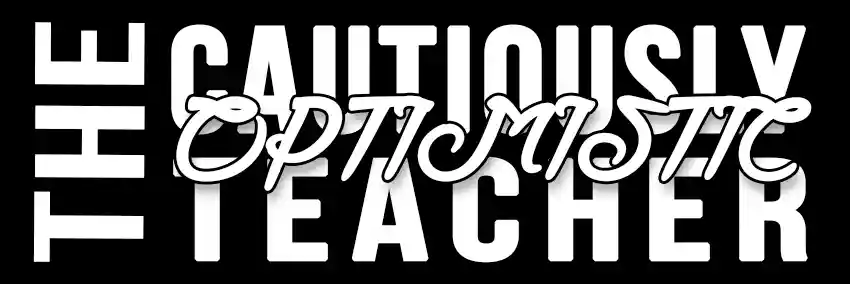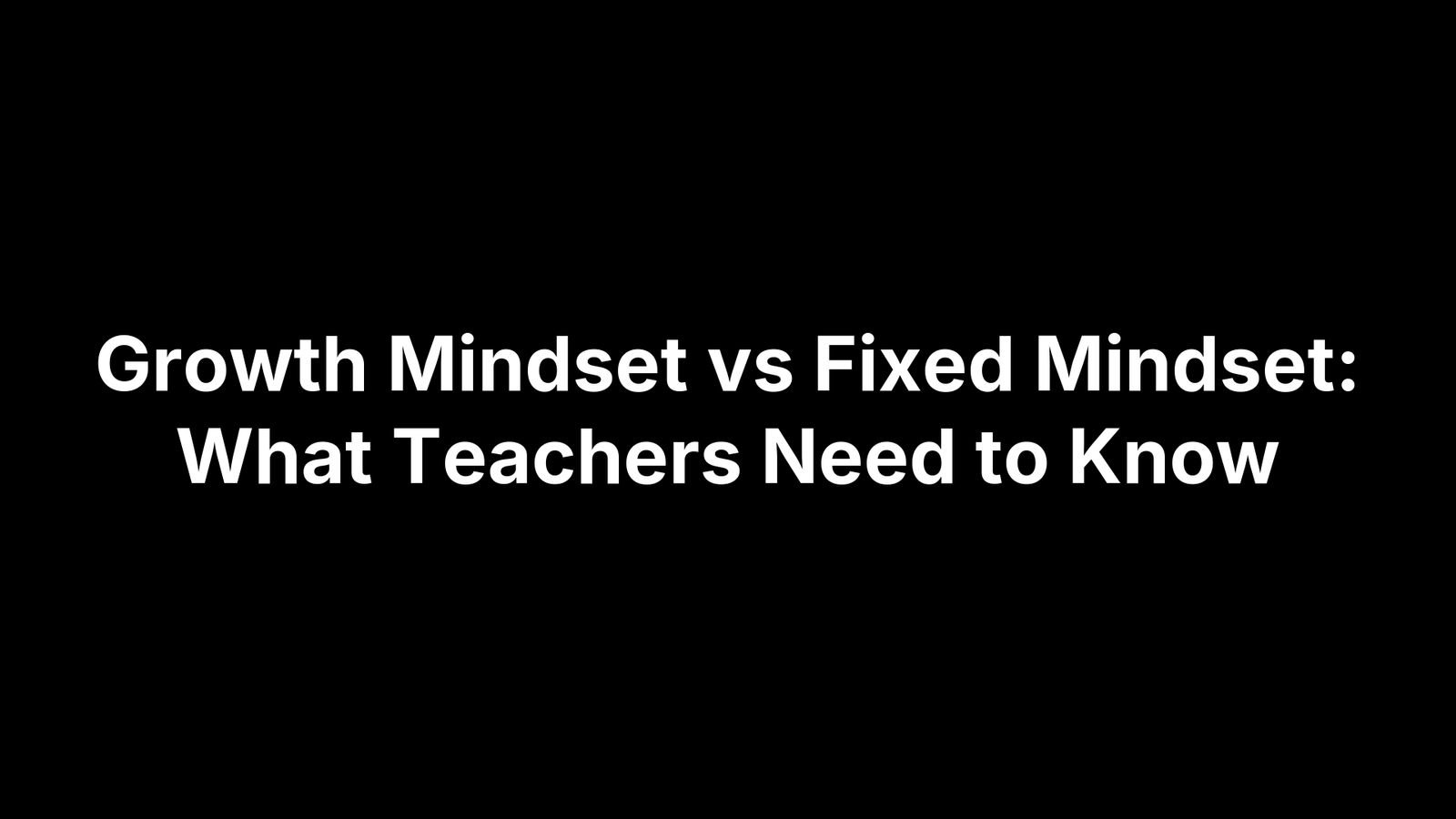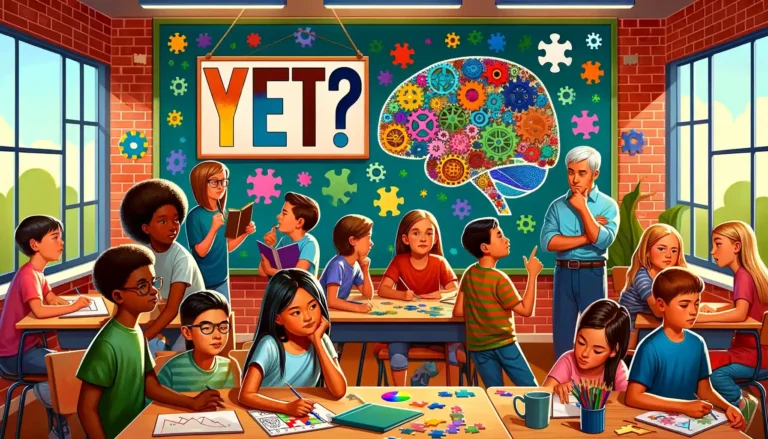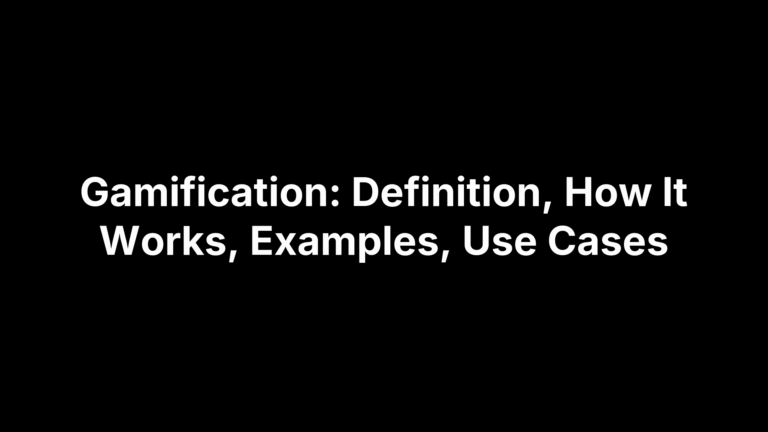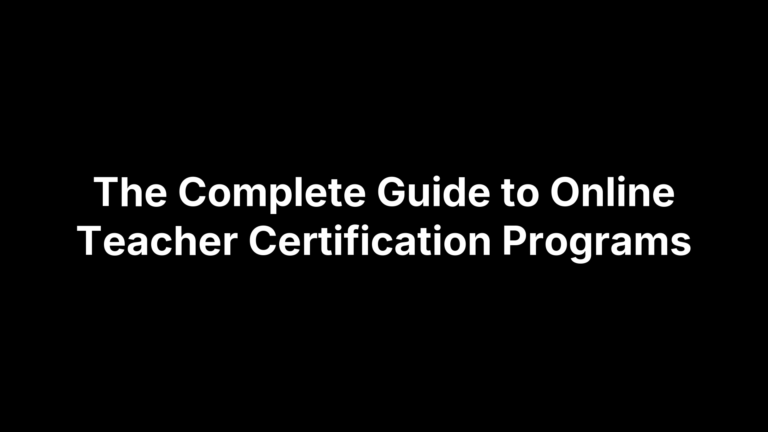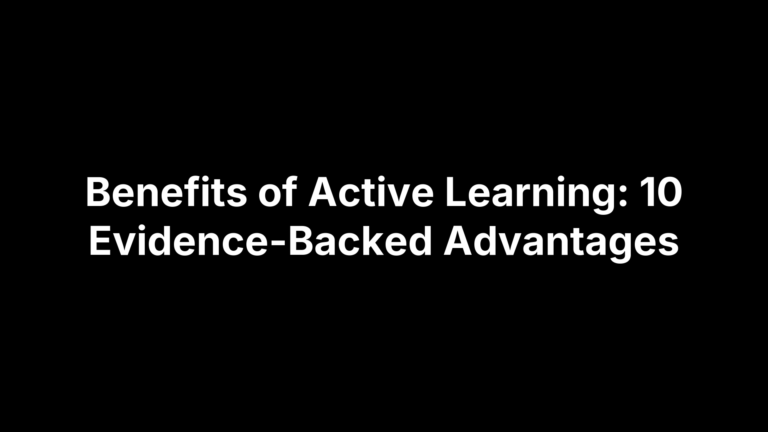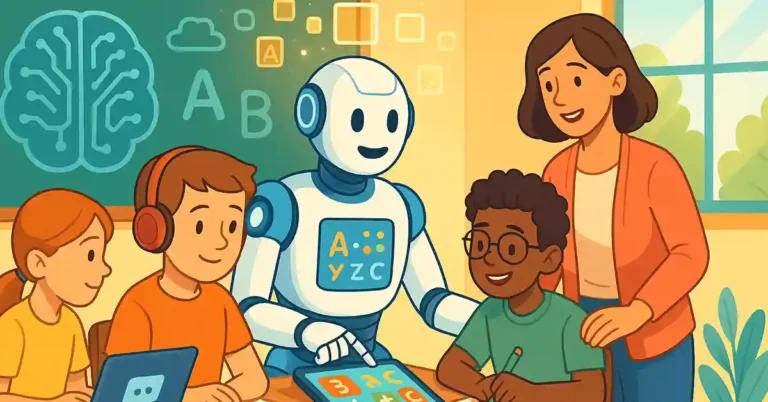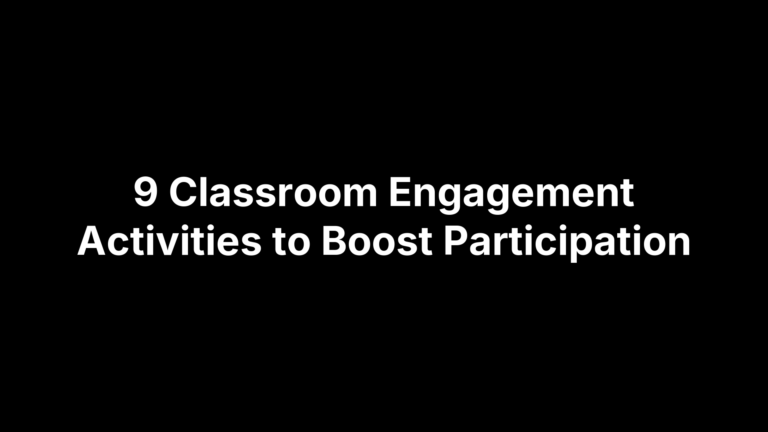Growth Mindset vs Fixed Mindset: What Teachers Need to Know
A student hits a snag on a math problem. One shrugs, mutters “I’m just bad at this,” and pushes the paper aside; another rewinds the steps, tries a new strategy, and asks for feedback. Those two reactions illustrate the heart of this article: a growth mindset is the belief that abilities can be strengthened through effort, feedback, and smart strategies, while a fixed mindset assumes talent is set in stone.
For teachers, that difference isn’t theoretical—mindset shapes motivation, resilience, equity, and the overall energy of your classroom. If you want students who tackle challenges rather than dodge them, understanding and nurturing a growth mindset is non-negotiable. Ahead, you’ll find clear definitions, research highlights, tell-tale classroom signals, ready-to-use strategies, sample lessons, common pitfalls, progress-tracking tips, and a section on protecting your own mindset as an educator. Let’s get started.
Growth vs. Fixed Mindset in Plain Language
Think of a mindset as the story a student tells themselves about how learning works. In a growth mindset, the plot is “I can get smarter with practice.” In a fixed mindset, the storyline is “I’m either good at this or I’m not.” Carol Dweck’s seminal research with middle-schoolers showed that simply believing the first story led to higher effort, better grades, and more resilience. Modern brain science backs her up: thanks to neuroplasticity, every time we practice a skill, neurons fire together and wire together—literally reshaping the brain. In other words, the growth-mindset story is biologically accurate.
When teachers explicitly teach this distinction, students start to reinterpret mistakes as data, not verdicts. That subtle cognitive shift can snowball into more productive behaviors, healthier self-talk, and a classroom culture that prizes progress over perfection.
Core Beliefs Behind Each Mindset
| Big Idea | Growth Mindset Says… | Fixed Mindset Says… |
|---|---|---|
| Intelligence | “Brains grow with use.” | “You get the IQ you’re born with.” |
| Talent | “Skills are built step by step.” | “Some people just have it.” |
| Effort | “Hard work is the path to mastery.” | “If I’m talented, it should be easy.” |
| Challenge | “Bring it on—challenges stretch me.” | “I avoid tasks that might expose weakness.” |
| Failure | “Mistakes help me learn.” | “Mistakes prove I’m not good enough.” |
Typical student sound bites:
- Growth: “I haven’t solved it yet.” “Which strategy worked for you?”
- Fixed: “I’m just not a math person.” “If it’s hard, why try?”
Typical Behaviors and Classroom Self-Talk
You can often spot mindset orientation long before the first test is graded.
- Risk-taking vs. avoidance: Growth-oriented students volunteer for the harder chess bracket; fixed-mindset peers pick the easiest option on a choice board.
- Feedback response: Growth students jot notes during conferences, then revise. Fixed students cross their arms or argue the grade.
- Persistence signals: Watch for eraser scars, scratch paper filled with attempts, and comments such as “One more try.” Their opposites—clean pages, quick hands in the air, “I don’t get it”—often flag a fixed mindset.
Tip: Keep a tally for a week. Patterns emerge quickly and inform your next moves.
Quick Quiz for Teachers and Students
Use the statements below with a 1–5 Likert scale (1 = Strongly Disagree, 5 = Strongly Agree). Total the points; higher scores suggest a growth orientation.
- Practice can significantly improve my abilities.
- I like work that makes me think hard.
- When I fail, I look for lessons, not excuses.
- Feedback, even critical, is useful to me.
- Other people’s success inspires me to try.
- Talent matters, but strategy and effort matter more.
- I can change how “smart” I am over time.
Interpretation guide:
- 30–35: Solid growth mindset—keep nurturing it.
- 22–29: Mixed zone—target the lower-scored items with reflection and goal setting.
- Below 22: Predominantly fixed—introduce brain-science lessons and safe-to-fail challenges.
Remind students (and yourself) that a score is a snapshot, not a label. The goal is to notice thinking patterns and commit to the next small shift toward growth.
Why Mindset Matters for Student Learning Outcomes
Grades, grit, and even equity data can all trace a thread back to whether students see ability as fixed or expandable. Large‐scale studies (e.g., Dweck & Yeager, 2019) show that a brief growth-mindset intervention can boost GPAs for the lowest-achieving ninth-graders and cut course-failure rates by 9 percentage points. MRI research adds a biological layer: students who adopt growth statements activate the brain’s error-monitoring network more robustly, meaning they literally pay closer attention after a mistake. When motivation psychologists plug those findings into models such as Self-Determination Theory and Bandura’s self-efficacy loop, the through-line becomes clear:
- Growth belief ➜ greater sense of control (autonomy)
- Control ➜ higher effort and persistence (competence)
- Effort ➜ successful experiences (mastery)
- Mastery ➜ reinforced growth belief
This virtuous cycle is why a mindset shift can narrow gender and racial achievement gaps that otherwise look intractable. Below are three classroom levers that amplify the effect.
Impact on Goal Setting and Academic Risk-Taking
Students with a growth mindset usually chase mastery goals (“I want to understand polynomial division”) rather than performance goals (“I want an A without looking dumb”). That difference shows up in daily choices:
- Task selection: They pick the “challenge” column on a choice board or opt into an optional debate round.
- Strategy variety: They try graphic organizers, peer tutoring, and YouTube mini-lessons until one sticks.
- Emotional response: A wrong answer feels like feedback, not a personal indictment.
Fixed-mindset peers, by contrast, avoid stretch tasks that might expose limits, preferring easy wins that maintain the illusion of talent. Over a semester, the compounding effect is visible in reading levels, math fluency, and creative output. Teachers can tilt the scales by anchoring goal-setting conferences in “What will you learn?” rather than “What grade do you want?”
Influence on Feedback, Grading, and Assessment Practices
Praise and grading policies can either fertilize or poison a growth-oriented culture.
Dos
- Focus comments on strategy, effort, and next steps: “Your thesis is clear; now test it with counter-evidence.”
- Build retake or revision windows so students experience learning as iterative.
- Use point-range rubrics that separate content mastery from soft skills like formatting.
Don’ts
- Label students (“natural writer,” “math whiz”), which cements identity around fixed traits.
- Attach zeros to first attempts without a path forward; it signals that mistakes are fatal.
- Make extra credit random or purely for compliance—it muddies the effort ↔ outcome link.
When feedback highlights controllable factors, students’ self-efficacy rises, and so do scores on subsequent assessments.
Connections to Social-Emotional Learning (SEL)
Mindset language dovetails neatly with the CASEL framework:
| SEL Competency | Growth-Mindset Alignment | Quick Bell-Ringer Prompt |
|---|---|---|
| Self-Management | Regulating emotions during struggle | “Describe a time yesterday when you stayed calm and tried a new strategy.” |
| Responsible Decision-Making | Evaluating effort vs. outcome | “What evidence tells you the approach you chose is working?” |
| Relationship Skills | Seeking and giving constructive feedback | “How did a peer’s suggestion improve your draft?” |
Consistent crossover between SEL and growth-mindset routines builds a culture where academic risk is safe, reflection is expected, and perseverance is celebrated. Over time, the dual emphasis yields students who are not only more proficient but also more empathetic, collaborative, and ready for whatever comes next.
Recognizing Mindset Signals in Your Classroom
Before you can shift the balance in the growth mindset vs fixed mindset tug-of-war, you have to know which way the rope is already pulling. Mindset rarely announces itself with a neon sign; it shows up in tone of voice, body language, Google-doc comments, and lunch-table chatter. By training your teacher radar to notice these subtle tells, you’ll intervene earlier and tailor instruction more precisely.
A quick caution: use the observations below as formative data, not permanent labels. Students fluctuate between mindsets depending on the subject, the day, and even who is sitting next to them.
Red Flags of a Fixed Mindset
Watch for patterns, not one-off moments.
- Risk avoidance
- Chooses the easiest option on a menu of tasks
- Says “I’ll just watch” during lab setups
- Defensive self-talk
- “I’m terrible at science—always have been.”
- “It’s not fair; the test was too tricky.”
- Perfectionism or shortcutting
- Erases until the paper tears rather than turning in a draft
- Copies a friend’s homework to avoid being “wrong”
- Emotional shutdown
- Shoulders slump, eyes avoid contact after feedback
- Frustration escalates into disengagement or behavior issues
Underlying drivers often include fear of judgment, stereotype threat, or past experiences where mistakes were punished rather than mined for insight.
Positive Indicators of a Growth Mindset
These behaviors tell you students believe effort leads to improvement.
- Help-seeking with intention
- Raises a hand to ask, “Can you show me another strategy?”
- Schedules a quick conference before the due date
- Visible perseverance
- Uses scratch paper, manipulatives, or digital tools to retry problems
- Celebrates partial success: “I got step two this time!”
- Feedback uptake
- Highlights rubric notes and revises accordingly
- Thanks peers for constructive critique during workshops
- Peer encouragement
- Says “Try this approach—I struggled at first too.”
- Shares resources without giving away answers
These cues often snowball; one student modeling productive struggle can shift the entire group’s norms.
Diagnostic Tools and Surveys
Structured instruments can validate—or challenge—your anecdotal impressions.
- Mini-surveys
- Three-question Google Form after an assessment: beliefs about effort, strategy, and feedback usefulness.
- Observation checklists
- Track behaviors like “asked clarifying question” or “avoided task” during group work; total weekly tallies to spot trends.
- Reflection prompts
- Exit ticket: “What mistake taught you the most today?” Compare depth of responses over time.
- Peer interviews
- Students ask classmates about challenges and strategies, then record themes on a Padlet.
- Work-sample audits
- Collect first drafts and final drafts; look for evidence of revision cycles.
Ethical pointers:
- Keep individual results confidential; share class-level patterns.
- Frame surveys as a way to improve teaching, not to judge students.
- Revisit data periodically; shifts toward growth validate your interventions, while stagnation signals the need for new supports.
When you pair keen observation with light-touch diagnostics, you’ll see the invisible narratives students carry—and you’ll be positioned to rewrite those stories with them.
Practical Strategies to Foster a Growth Mindset Culture
A belief change begins as a behavior change. The quickest way to tilt the classroom climate toward growth is to weave mindset moves into routines you already run—mini-lessons, feedback loops, hallway chatter, and assignment design. Below you’ll find five high-impact levers. Pick one to pilot this week, then layer in the rest as habits solidify.
Modeling Growth Mindset as an Educator
Students watch us closer than they listen to us, so narrate your own learning curve.
- Think-alouds: “I tried a new rubric in 3rd period and it bombed; here’s how I’m tweaking it for you.”
- Visible revisions: Keep an early draft of a lesson plan taped next to the polished version. Ask students to spot the changes.
- Public goal-setting: Share a professional-learning target on the board (e.g., “I’m working on stronger wait time”) and invite students to hold you accountable.
- Story swaps: Once a month, trade “favorite mistake” stories with the class. Your vulnerability normalizes theirs.
Pro tip: pair modeling with micro-reflection. A 30-second debrief—“Notice how I didn’t give up when the tech glitch hit?”—helps students connect dots between action and mindset.
Crafting Effective Feedback and Praise
Feedback is where the growth mindset vs fixed mindset debate lands on the ground. Use language that spotlights controllable factors:
Do
- Name the strategy: “Your use of transition words clarifies the argument.”
- Pinpoint effort that led to progress: “You practiced scales daily; your tempo is steadier.”
- Offer a next step: “Combine sentences 3 and 4 to eliminate repetition.”
Don’t
- Praise the person: “You’re a natural writer.”
- Equate speed with smarts: “You finished first—so smart!”
- Leave effort unlinked to strategy: “Nice try, keep working.”
When students revise, add a “feedback reflection” box: What suggestion did you apply? What happened? This meta-analysis cements learning and cuts photocopy clutter.
Teaching the Science of the Brain
A quick dose of neuroscience gives growth claims teeth.
- Hook: Show a 60-second GIF of neurons forming new connections.
- Hands-on: Students twist two pipe cleaners into a branching “synapse.” Each additional pipe cleaner represents practice reps.
- Mini-lecture: Explain neuroplasticity in plain language—practice strengthens neural pathways like adding lanes to a highway.
- Connect: Ask, “How does this model change the way we view hard tasks?” Students jot takeaways on sticky notes for an anchor chart titled “Brains Grow.”
Extend the lesson with a myth-busting exit ticket: “True or False—Intelligence is fixed at birth.” Discuss responses next day to correct lingering misconceptions.
Embedding Mindset Language in Daily Routines
Consistency beats novelty. Seed growth-oriented cues across the day.
- Anchor charts: Post sentence stems—“One strategy I’ll try is…,” “My error taught me that….”
- Attendance question: Instead of “Here?” ask, “What challenge are you tackling today?” Lightning-round answers keep mindset top of mind without eating instruction time.
- Digital footers: Autocomplete comments in Google Classroom with “Yet” reminders (“You haven’t cited evidence yet”).
- Classroom mantras: Use call-and-response—Teacher: “Mistakes are…,” Students: “Data!”
Within weeks, students start borrowing the language with each other—a peer-pressure loop that favors growth.
Encouraging Productive Struggle and Challenge
The sweet spot is “hard enough to stretch, safe enough to try.”
- Scaffolded choice boards: Three columns—Practice, Stretch, Mastery. Require one pick from Stretch before the assessment.
- Tiered assignments powered by AI: Use the site’s Differentiated Instruction Helper to generate leveled texts on the same concept; students self-select up or down as confidence grows.
- My Favorite Mistake protocol: Groups solve a multi-step problem, circle the most instructive error, and present why it deepened understanding.
- Challenge journals: After each unit, students log one task that felt impossible on day one but manageable on day ten, along with strategies that bridged the gap.
Guardrails matter. Provide check-in points, reteach mini-lessons, and peer coaches so struggle stays productive, not punitive.
Pick one of these strategies, set a clear success metric (e.g., “80 % of students reference strategies, not talent, in journals by October”), and review progress every two weeks. Small, intentional moves snowball into a classroom where growth thinking isn’t a poster—it’s the operating system.
Lesson Ideas and Classroom Activities Students Love
Big posters and punchy quotes are fine, but mindsets shift when students do something that proves effort changes outcomes. The four ideas below are low-prep, high-engagement, and field-tested in classrooms ranging from Grade 3 to AP Physics. Sprinkle one into your week and watch the growth mindset vs fixed mindset discussion move from theory to lived experience.
Brain Builders Workshop Series
Think of this as a semester-long “training camp” for metacognition.
- Session 1 — Baseline & Goal-Setting
- Students complete the quick quiz from earlier and graph their scores anonymously.
- They craft one SMART goal (
Specific-Measurable-Achievable-Relevant-Time-bound) focused on a skill, not a grade.
- Session 2 — Neuroplasticity Lab
- Reuse the pipe-cleaner neuron model, then run a two-minute “mirror writing” challenge. Students switch hands and feel neurons struggle, then adapt.
- Sessions 3–5 — Deliberate Practice Cycles
- Each week, students choose a mini-skill (e.g., factoring quadratics, citing evidence) and log 15 minutes of targeted practice three times.
- A quick “stand-up meeting” every Friday lets pairs share obstacles and strategies.
- Showcase Day
- Students present a one-slide “Before → After” chart documenting progress, setbacks, and the strategy that mattered most.
Materials: chart paper, sticky notes, optional digital portfolios (Canva or Google Slides).
Assessment: Use a single-point rubric that rates Reflection Depth, Evidence of Practice, and Next-Steps Planning.
Growth Mindset Journaling Routine
Five minutes a week builds surprising reflection muscle.
- Provide a composition notebook or digital doc with pre-printed sections: “Struggle of the Week,” “Strategy I Tried,” “Evidence of Growth.”
- Prompt schedule:
- Week 1: “Describe a time you used yet.”
- Week 2: “List two mistakes that taught you something.”
- Week 3: “Whose feedback helped you? How?”
- Rotate prompts; after four weeks, let students write their own.
- Peer Share: Once a month, students swap journals, highlighting one entry that shows clear progress language.
Quick rubric (✓/✓+): Completeness, Specificity, Mindset Vocabulary. Average scoring time: 30 seconds per journal.
Literature & Media Connections
Stories let students see mindset shifts before they risk one themselves.
| Text/Clip | Why It Works | Discussion Seeds |
|---|---|---|
| “The Dot” by Peter H. Reynolds | Elementary friendly; shows effort transforming talent. | “Where does Vashti move from fixed to growth? Cite the line.” |
| Hidden Figures (Launch scene) | Real-world STEM barriers and perseverance. | “How did the women reinterpret failure?” |
| Michael Jordan cut-from-team anecdote (short video) | Athletic hook for reluctant readers. | “Is talent or practice spotlighted? Find quotes.” |
Activity idea: Split class into four “Book Clubs.” Each group creates a two-column chart of fixed vs growth statements made by characters, then acts out a 60-second “mindset remix” rewriting a fixed line into a growth one.
Cooperative Learning Structures
Mindset talk sticks when peers hear it from peers.
- My Favorite Mistake
- Groups solve a multi-step problem on chart paper.
- They circle their best error and annotate why it’s instructive.
- Gallery walk: classmates leave sticky notes with questions or kudos for the analysis.
- Error Analysis Relay
- Station rotation where each table has a different flawed solution. Teams diagnose the error and record the fix before moving on. Speed is capped to encourage accuracy over haste.
- Challenge Choice Board
- Three tiers (Practice, Stretch, Expert). Requirement: students must justify in writing why they selected their tier and predict one obstacle. Reflect afterward on accuracy of their prediction.
- Peer Coach Cards
- Print 3×5 cards with sentence stems: “Have you tried ___?” “What strategy did you use last time?” Distribute to “coaches” who earned the chance by demonstrating revision in previous work.
Teachers report fewer off-task conversations because roles and language are pre-scaffolded, leaving less room for “I can’t” scripts.
Pick the activity that fits your bandwidth, set a clear success metric—“All students will reference at least one strategy in journals by week four”—and iterate. When students experience firsthand that effort + strategy = improvement, the growth mindset isn’t just a poster; it’s common sense.
Overcoming Common Misconceptions and Roadblocks
Even with the best lesson plans, the journey from fixed to growth can stall. Misinterpretations of the science, skepticism from families, and uneven scaffolding all threaten momentum. Recognizing these obstacles early lets teachers redirect before the moment—and the mindset—harden.
The ‘False Growth Mindset’ Trap
A poster that says “Try, try again” isn’t enough. Carol Dweck calls it a false growth mindset when we:
- Celebrate effort alone—“Great job working hard”—without connecting it to effective strategy or reflection.
- Use “growth” language as a polite cover for low expectations: “At least you tried.”
- Treat mindset as an identity (“You are growth-minded”) rather than a set of habits.
Fix it:
- Pair praise with precision: “Your summary improved because you highlighted only the most relevant evidence.”
- Spotlight strategy switches—ask, “What did you adjust between draft one and two?”
- Track impact data (revision scores, reading levels) to show that smart effort pays dividends.
Resistance from Students and Parents
Pushback usually sounds like “Some kids just aren’t math people” or “My child is working too hard already.” Head it off with a short, evidence-based script:
“Recent studies of 18,000 ninth-graders show that effort paired with feedback raises grades a full letter for struggling students. We’ll teach your child the strategies that make hard work count.”
Culturally responsive twist: validate lived experiences of bias before introducing growth concepts—“You may have been told writing isn’t your thing. Let’s analyze whose standards were used and how practice rewires the brain.”
Quick tools:
- Parent night demo: have adults try a brain teaser, then show neuron videos.
- Student skeptics: assign a reflection comparing Hidden Figures obstacles to their own.
Balancing High Expectations with Support
Growth mindset isn’t a license to drown kids in rigor. The sweet spot is high expectations plus matched scaffolds.
- Gradual release: I Do ➜ We Do ➜ You Do; reduce supports as competence rises.
- Tiered rubrics: “Proficient” sets the bar, “Expert” invites stretch goals.
- Safety nets: revision windows, peer tutoring, and AI-powered differentiated texts keep struggle productive.
Rule of thumb: If more than 20 % of the class stalls at the same step, reteach; if fewer, confer individually. Students learn that high bars come with sturdy ladders—an authentic growth mindset in action.
Tracking Progress and Sustaining Momentum
Mindset work sticks when students (and you) can see it moving the needle. The trick is to collect just enough evidence to guide next steps without drowning in spreadsheets. Think “small data, quick cycles.” Below are three focus areas that keep the growth-mindset engine humming all year.
Data Sources: Surveys, Reflections, and Classroom Evidence
Mix quantitative and qualitative snapshots so no single data point tells the whole story.
- Pulse surveys
- Re-issue the 7-item quiz every quarter; graph class averages side-by-side.
- Add one open-ended question (“What challenged you most this month?”) for context.
- Reflection artifacts
- Mine weekly journals for growth vocabulary—count terms like “strategy,” “yet,” “revision.”
- Use a simple tally sheet; five minutes of coding reveals trends.
- Work-sample comparisons
- Keep a digital folder of “First Draft vs. Final Draft” pairs.
- Tag each with
Revision Depth: Low / Medium / Highso improvement is visible at a glance.
- Observation notes
- During group work, record behaviors on a half-page checklist—“Asked for feedback,” “Chose harder task,” “Avoided challenge.” Aggregate totals weekly.
Triangulating across at least three sources guards against false positives and shows whether mindset shifts translate to academic gains.
Celebrating Growth Milestones
Recognition fuels the next push. Aim for low-prep, high-impact shout-outs.
- Progress dashboards: Color-code each student’s survey growth; post the anonymized chart on the wall.
- “Strategy Spotlight” tickets: Students drop a note describing a peer’s effective tactic; draw two each Friday for small prizes.
- Reflection showcases: Once per unit, invite students to read a journal entry that captures a breakthrough moment. Peers respond with sticky-note kudos.
Keep celebrations process-focused—highlight the how, not the who.
Iterating Your Approach
Data without action is just paperwork. Schedule a 15-minute “mindset audit” every three weeks:
- Review top three concern areas (e.g., low revision depth).
- Brainstorm one adjustment—maybe model a new feedback protocol or adjust task difficulty.
- Set a micro-goal (
< 2 weeks) and note it in your planner. - Share wins and hiccups with a colleague or PLC; outside eyes spot blind spots quickly.
By cycling through collect → celebrate → tweak, you create a living system where growth mindset isn’t a one-off lesson but an evolving classroom norm.
Nurturing Your Own Growth Mindset as a Teacher
Students notice far more than our lesson plans; they sense whether we believe change is possible. A teacher who treats missteps as data models the very growth mindset vs fixed mindset difference we want kids to grasp. Research shows that classrooms where educators voice their own learning journeys see higher student perseverance and improved academic outcomes.
Of course, grading marathons and curriculum pivots can nudge any of us toward a fixed script—“I’m just not a tech person,” “Classroom management isn’t my thing.” The antidote is to build simple, sustainable habits that keep your professional learning curve visible, intentional, and rewarding.
Reflective Practices and Journaling for Educators
Five minutes of structured reflection can rewire your internal narrative.
- Daily prompt: “What challenge did I face today, and which strategy moved me forward?”
- Weekly prompt: “Which piece of feedback shifted my instruction, and how will I test that tweak next week?”
- Monthly check-in: Grade one of your own lessons with the same rubric you use for students. Note growth and next steps.
Keep a digital or paper journal; rereading entries every quarter highlights progress you might otherwise miss.
Seeking Feedback and Mentorship
Growth accelerates in community.
- Peer observation swap: Trade one class period with a colleague and focus on a single look-for, such as wait time or questioning techniques.
- Instructional rounds: Join a triad that visits one room each week, debriefing on evidence of student thinking.
- Online PLCs: Hashtags like #EduTwitter or subreddits such as r/Teachers offer low-stakes spaces to crowd-source solutions and celebrate wins.
Treat every suggestion as a hypothesis to test, not a verdict on your talent.
Leveraging Professional Development and AI Tools
Time saved is bandwidth for experimentation. The Cautiously Optimistic Teacher’s AI suite can free up hours:
- Worksheet Maker designs differentiated practice in seconds.
- Differentiated Instruction Helper tailors reading levels or problem sets on demand.
- Report Card Commentor drafts personalized feedback, letting you focus on conferencing.
Use those reclaimed minutes to pilot a new discussion protocol or read that research article you bookmarked. Every incremental tweak reinforces the message—skills grow when we invest deliberate effort and smart strategies.
Key Takeaways for Busy Educators
Pressed for time? Here’s the 60-second refresher on the growth mindset vs fixed mindset debate:
- Mindset is a teachable belief, not a personality trait. Students who see ability as expandable work harder, take smarter risks, and bounce back faster.
- Language drives belief. Swap “You’re so smart” for “Your reasoning got sharper after draft two.”
- Feedback, rubrics, and retake policies either reinforce growth or cement fixed thinking—design them on purpose.
- Mini-lessons on neuroplasticity plus daily reflection routines turn abstract science into lived experience.
- Model what you preach: share your own revisions, ask for peer feedback, celebrate strategic effort.
- Track progress with quick surveys, journal audits, and work-sample comparisons; adjust supports every few weeks.
Ready to put these ideas into action? Explore the ready-made lessons and AI tools waiting for you at The Cautiously Optimistic Teacher. Your future growth stories start there.
